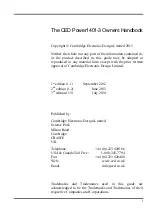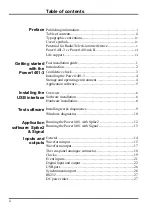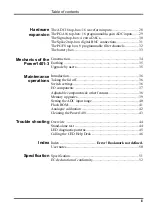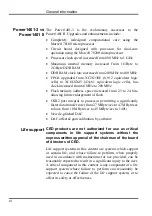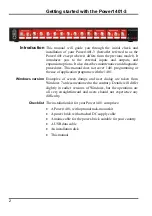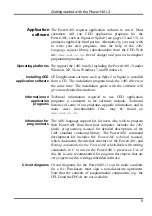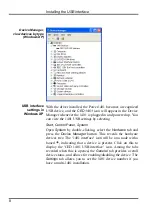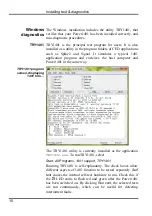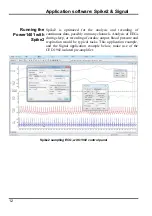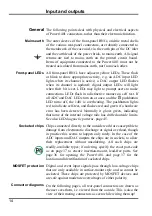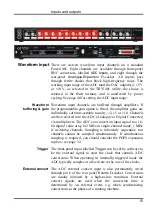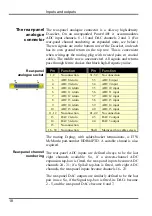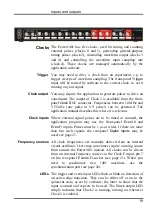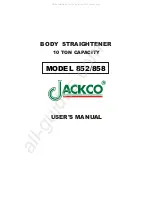
Getting started with the Power1401-3
Application
software
The Power1401 requires application software to run it. Most
customers will run CED application programs for the
Power1401, such as Signal or Spike2 (see pages 12 and 13), or
products supplied by third parties. Alternatively, you may wish
to write your own programs, with the help of the
1401
Language support
library (downloadable from the CED Web
site:
www.ced.co.uk
, free of charge) and your own computer
programming manuals.
We support the 1401 family (including the Power1401-3) under
Windows XP, Vista, Windows 7, and Windows 8.
Operating platforms
CED application software such as Spike2 or Signal is installed
from a CD. The installation program loads the 1401 drivers at
the same time. The installation guide with the software will
give more detailed instructions.
Installing CED
application software
Technical information required to use CED application
programs is contained in the software manuals. Technical
histories of some of our programs, upgrade information, and in
many cases downloadable files, may be found on
www.ced.co.uk
.
Information on
application
programs
The 1401 language support kit, for users who wish to program
their Power1401 from their host computer, includes the
1401
family programming manual
for detailed descriptions of the
1401 standard command library. The Power1401 command
development kit includes the
Power1401 technical manual
,
which documents the internal structure of the Power1401, and
Writing commands for the Power1401
which deals with writing
commands in C to run on the Power1401’s processor. Use of
this kit is only recommended for program developers that are
very experienced in writing embedded software.
Information for
programmers
Circuit diagrams for the Power1401-3 can be made available
for a fee. Purchasers must sign a non-disclosure agreement.
Note that the contents of programmable components (e.g. the
CPLD and the FPGA) are
not
available.
Circuit diagrams
5
Summary of Contents for Power1401-3
Page 56: ...User notes 50 ...

